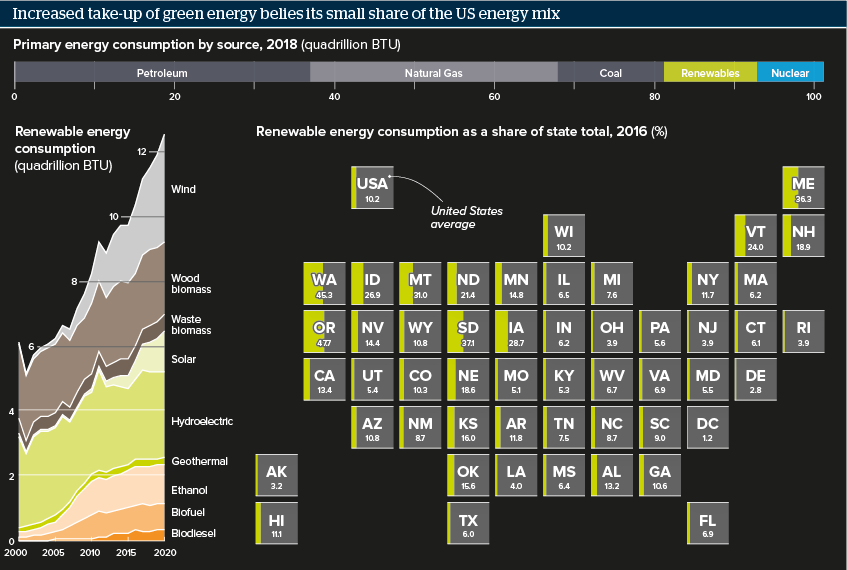Green New Deal will energise both parties’ 2020 pushes
The Green New Deal calls for massive social, economic and energy reform including net-zero US emissions in ten years
Source: US Energy Information Administration; Oxford Analytica
Outlook
The US energy mix is becoming ‘greener’, partly due to voter wishes and legislation. In February, Democratic lawmakers announced the Green New Deal (GND), a huge package of policy recommendations including achieving net-zero greenhouse gas emissions in ten years and massively increasing green technology and green infrastructure use, plus stronger labour protections, jobs guarantees and equitable resource-sharing.
However, Democrats and Republicans disagree over the GND: fiscal hawks in both parties say it is too broad and expensive, while there is political posturing over whether climate change is a real phenomenon. Given these differences, only incremental green energy reforms are likely in coming years, especially with climate change sceptic Donald Trump in the White House, but both parties will campaign on these differences in 2020.
Impacts
- Split party control of Congress could make it more difficult to agree reforms to US energy policy.
- Republicans will prefer market-based green energy incentivisation, whereas Democrats will support state-led intervention.
- The GND does not pose immediate threat to fossil fuels or construction and agriculture practices but is gaining voter attention.
- States have differing political imperatives to take on (or not) green reforms, and differing available funds
See also
- Green stance could be Pyrrhic for US President Trump - Jul 19, 2019
- US Green New Deal will evolve piecemeal - Apr 3, 2019
- More graphic analysis
